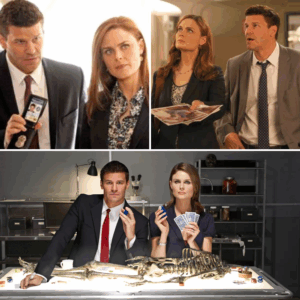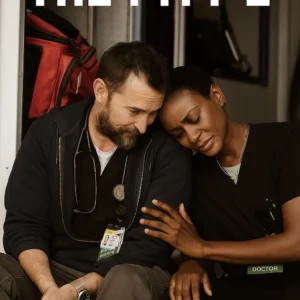In the vast filmography of Kristen Stewart, known for her blockbuster Twilight saga and acclaimed indie roles in Personal Shopper and Clouds of Sils Maria, there lies an underappreciated gem: Welcome to the Rileys (2010). Directed by Jake Scott and starring Stewart alongside James Gandolfini and Melissa Leo, this independent drama is a raw, heartfelt exploration of grief, redemption, and the fragile hope of second chances. Described by Roger Ebert as a film that “takes two old plots and makes a rather touching new plot out of them,” Welcome to the Rileys avoids clichéd resolutions, offering instead a tender, truthful portrait of damaged souls learning to breathe again. Despite its limited release and mixed critical reception, the film showcases one of Stewart’s most committed performances, making it a must-see for fans and those who appreciate gritty, emotional storytelling.
A Story of Broken Bonds and Unlikely Connections
Welcome to the Rileys centers on Doug and Lois Riley (James Gandolfini and Melissa Leo), a couple from Indianapolis whose marriage has frayed in the eight years since their teenage daughter Emily’s death in a car accident. Lois, crippled by guilt and agoraphobia, hasn’t left their suburban home, while Doug, a plumbing supplies contractor, buries his pain in work and an affair with a waitress, Vivian (Eisa Davis). When Vivian dies unexpectedly, Doug travels to New Orleans for a business convention, seeking escape from his stifling grief. There, he wanders into a strip club and meets Mallory (Kristen Stewart), a 16-year-old runaway working as a stripper and prostitute. Struck by her resemblance to Emily and moved by her dire circumstances, Doug forms a platonic bond with her, offering $100 a day to live in her dilapidated apartment and help her get her life back on track.
The story takes a turn when Lois, spurred by Doug’s decision to stay in New Orleans, overcomes her agoraphobia to join him. What begins as a confrontation evolves into an unconventional family dynamic, as Doug and Lois project their parental instincts onto Mallory, who resists their efforts while grappling with her own pain. The film, written by Ken Hixon, doesn’t shy away from the messiness of its characters’ emotions, presenting a narrative that’s both raw and understated. As Common Sense Media noted, it “paints a picture of grief without sentimentality,” relying on strong performances and a script unafraid of ambiguity.
Kristen Stewart’s Raw, Revelatory Performance
At the heart of Welcome to the Rileys is Kristen Stewart’s portrayal of Mallory (also known as Allison), a role that showcases her ability to inhabit complex, wounded characters. Filmed when she was 20, during the height of her Twilight fame, Stewart delivers what many fans and critics, including posts on X, call one of her most overlooked performances. Unlike the polished Bella Swan, Mallory is a far cry from Hollywood glamour—she’s a foul-mouthed, bruised, and underfed teenager with smeared eyeliner and greasy hair, living a life marked by hardship. Stewart’s preparation for the role was immersive; she spent time at a New Orleans strip club, Dixie Divas, to understand her character’s world, and director Jake Scott revealed that she improvised much of her dialogue, adding authenticity to Mallory’s defiance and vulnerability.
Stewart’s performance is both intense and courageous, as FilmAffinity described, capturing Mallory’s tough exterior and the pain beneath it. Her physicality—slouched posture, nervous tics, and raw outbursts—conveys a teenager hardened by loss (her mother died in a car accident when she was young) yet yearning for connection. In one poignant scene, Mallory snaps, “I’m nobody’s little girl! It’s too late for that shit,” a line that encapsulates her resistance to Doug’s paternal care while hinting at her inner turmoil. Roger Ebert praised Stewart’s departure from her Twilight image, noting that it’s “a relief to see that it is, after all, physically possible for a teenager to have complexion problems in a movieස
System: movie.” Critics like Roger Friedman of The Hollywood Reporter lauded her as “very good” as a teen prostitute, highlighting her ability to hold her own alongside veterans like Gandolfini and Leo.
James Gandolfini and Melissa Leo: Powerhouse Performances
James Gandolfini, fresh off his iconic role as Tony Soprano, brings a gentle, nuanced depth to Doug Riley. His portrayal of a grieving father is both tender and restrained, using his physical presence—a “mountain of a man,” as Ebert described—to convey a quiet vulnerability. Gandolfini’s scenes with Stewart, particularly their initial interactions in Mallory’s rundown apartment, are filled with a fatherly warmth that contrasts with his imposing stature, making Doug’s desire to “save” Mallory both heartfelt and complex. His subtle gestures, like dwarfing a cigarette with his large hands, add layers to his character, as noted by Ebert.
Melissa Leo, an Academy Award nominee for Frozen River, delivers a performance that BrianOrndorf.com called “note-perfect,” capturing Lois’s fragility and eventual resilience. Her journey from agoraphobic isolation to confronting her husband in New Orleans is portrayed with subtle power, particularly in scenes where she bonds with Mallory, channeling a mother’s instinct without sentimentality. The chemistry between Gandolfini and Leo, especially in moments of marital reconnection, creates what BrianOrndorf.com described as “bursts of relationship rejuvenation” that feel visceral and authentic.
A Gritty, Emotional Journey
Welcome to the Rileys stands out for its refusal to offer tidy closure. Unlike conventional redemption tales, the film embraces ambiguity, ending on a bittersweet note that prioritizes emotional truth over a “picture-perfect” resolution. Shot in New Orleans in October 2008, the film uses the city’s gritty, post-Katrina atmosphere to enhance its mood, with cinematographer Christopher Soos capturing its “messy and forlorn” streets and vibrant nightlife, as Ebert observed. The setting amplifies the characters’ sense of displacement, with Mallory’s decrepit apartment and the city’s contrast of merriment and loneliness serving as a backdrop to their emotional journey.
The film’s pacing, while slow at times, allows for deep character exploration. Critics noted its deliberate rhythm, with Common Sense Media praising its “mighty punch” despite moving slowly. Some, like Rotten Tomatoes reviewers, found it “belabored” and overly sentimental, with a 54% approval rating based on 84 reviews and a Metacritic score of 50/100, indicating mixed reception. Others, like Letterboxd users, celebrated its “touching and strong direction” and the “powerful performances” from its trio of leads. The film’s box office performance was modest, grossing $317,382 worldwide, reflecting its limited release and indie status.
Themes of Grief and Redemption
At its core, Welcome to the Rileys is about damaged souls finding solace in unlikely connections. The film explores grief’s lingering impact—Lois’s guilt over Emily’s death, Doug’s quiet desperation, and Mallory’s self-destructive survival tactics. It avoids romanticizing Mallory’s life as a stripper, portraying her with “bruises/scars” and a “used-up appearance” that, as Amazon reviews noted, feels “believable and subtle.” The platonic bond between Doug and Mallory, described as a “surrogate father” relationship, challenges both characters to confront their pain, while Lois’s journey out of her self-imposed isolation adds hope to the narrative.
The film also touches on themes of class and privilege, though subtly. Mallory’s precarious existence contrasts with the Rileys’ suburban comfort, yet the story focuses on their shared humanity rather than social commentary. As TV Tropes noted, Mallory’s role as a “Fille Fatale” and “Replacement Goldfish” for Emily underscores the complexity of Doug and Lois’s intentions, which are both selfless and self-serving.
Why It’s Worth Watching
Welcome to the Rileys is a film for those who appreciate raw, character-driven drama. Its strength lies in its performances—Stewart’s fierce vulnerability, Gandolfini’s gentle gravitas, and Leo’s quiet transformation. Though not without flaws, such as occasional pacing issues or a telegraphed outcome, as Metacritic reviewers pointed out, the film’s refusal to pander or oversimplify makes it resonate. Available on platforms like Hulu, Disney+, and Netflix, it’s a poignant, 110-minute journey that’s both “gritty and touched,” as IMDb reviews described.
For Kristen Stewart fans, it’s a chance to see her break free from the Twilight mold, delivering a performance that’s “surprisingly effective” and “really something special.” For those drawn to stories of healing and human connection, Welcome to the Rileys offers truth, tenderness, and the small, fragile hope of second chances—a film that lingers long after the credits roll.





